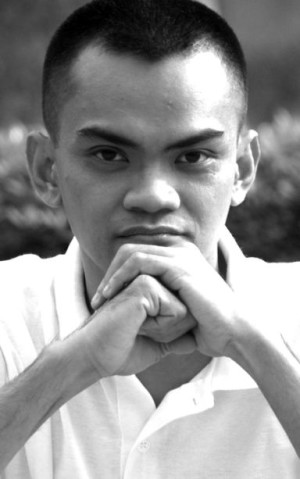
PAREDES
Amid the reports of rampant killings here in Cebu last week came the equally tragic news about four elderly siblings who died in a dawn fire in Camiguin.
It was a shock to us in the art community here in Cebu, particularly those of us in the Department of Fine Arts of the University of San Carlos, as one of them was our former faculty, Jorge Lao.
It was about a year ago when Sir Jorge, as he was fondly called by those of us who had been his students, finally retired.
He had been teaching in the USC fine arts program since the early 80s. As he left, he looked forward to spending the rest of his years as a full-time artist.
In fact, he planned to spend retirement pay to build a mini-home gallery, where he could work and display his paintings at the same time.
Yet, family chores, like driving his little grandchildren to school or picking up his wife from the grocery took up some of his time.
The original plan for a home gallery had to be revised to accommodate other needs of a family that is getting bigger.
As his students back in the early 90s, my classmates and I would often go to Sir Jorge’s house, which is not far from the university, to submit our paintings or drawings.
He would lead us inside the house, which is decorated with his own paintings.
His daughters were all small back then and we saw how our teacher really tried to raise them with his wife with what little he earned from teaching, being the only one employed.
Of course, there was also money that came from selling art but it was not always a steady income.
Besides, he had this tendency to veer away from being too “commercial,” as he often insisted on doing his own “experiments” that surprised even his own peers, most of whom stuck to the usual traditional styles that local collectors preferred.
This urge to deviate from the usual became stronger in him as he grow older.
It seemed as though he was returning to youthful adventurism as an artist.
In fact, to those of us who had known Sir Jorge both as teacher and colleague, we all noticed a kind of child-like character in him, which was ironic considering he was one of the most senior members of the faculty.
He loved to make people laugh and was obviously amused at his own jokes, which were mostly “green” and often politically incorrect.
And, while his jokes were irreverent, Sir Jorge was actually deeply religious.
Sir Jorge was our teacher in most drawing subjects and the most memorable experience for me and my classmates was when he brought a woman to class to be the model of our first nude sketching session.
It was an awkward moment both for the model and for most of us who were seeing a woman undress in front of us for the first time.
But Sir Jorge posed the model in such a way that there was no eye contact between her and us, the artists trying so hard to portray her on paper.
It was all for art’s sake and perhaps also for science.
Drawing with a live nude model was the culmination of our study in anatomy, which was spent mostly drawing bones and muscles from xeroxed diagrams.
I still have my own drawings marked with grades by Sir Jorge.
The pages from a cheap sketchpad has yellowed through the years but they show how I struggled hard to draw the human body as scientifically as possible.
Sometimes, I showed them to my own students as it is now my turn to teach drawing in the university.
I owe it to Sir Jorge how I continue to respect tradition in art, such as the importance of learning how to draw the human figure well.
At the same time, like my teacher, I have this constant urge to break free from that same tradition in order to explore new grounds.
In this sense, our artist friend Adeste Deguilmo was right when he said that Jorge Lao was a paradox.
He was the child that refuses to grow, as Picasso once described the artist.